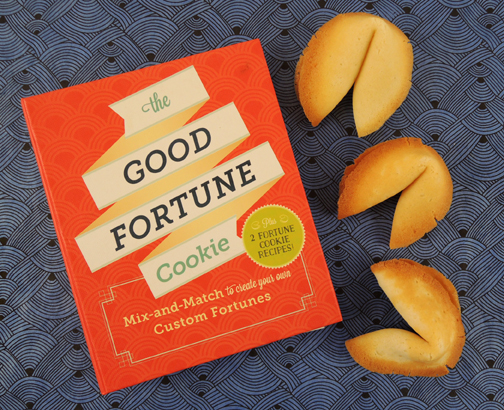 The time was summer. The place was Wisconsin. Katie was shopping at an antique mall when she discovered The Good Fortune Cookie (Chronicle Books, 2015) inside a dealer nook. After flipping through a few pages and laughing at the unique format, she knew the book belonged at our library. As an added bonus, it included recipes to make your own fortune cookies, so to the literary testing kitchen we go! Take it away Katie!
The time was summer. The place was Wisconsin. Katie was shopping at an antique mall when she discovered The Good Fortune Cookie (Chronicle Books, 2015) inside a dealer nook. After flipping through a few pages and laughing at the unique format, she knew the book belonged at our library. As an added bonus, it included recipes to make your own fortune cookies, so to the literary testing kitchen we go! Take it away Katie!
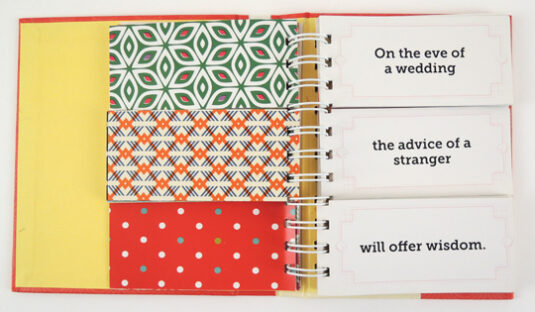
The book itself is simple and adorable. The spiral-bound pages divide into three sections, which you can flip to create hundreds of fortunes (very similar to the Shakespearean insult book Dr. Dana reviewed here). What’s especially cute is that each section is backed with brightly colored paper, as you can see above. But the most intriguing part for me were the recipes in the back of the book. I’ve never made fortune cookies!
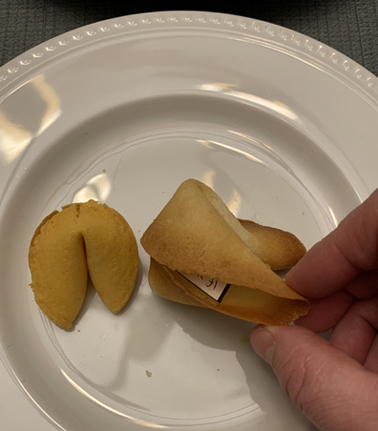
A quick glance let me know that I had most of the ingredients on hand. But there was something listed I have never encountered before: superfine sugar. I stopped by three different grocery stores and none of them carried it. Turns out superfine sugar (also called caster or quick-dissolve) is required when the sugar needs to melt and mix faster into batters or creams. It’s not recommended to substitute regular granulated sugar. Thank goodness we had a small food processor in the back of our pantry…I was able to grind the granulated sugar to superfine.
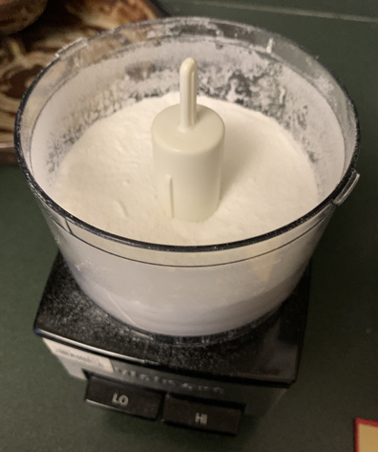
The recipe instructions are very concise, and it didn’t take long before I was ready to bake the cookies. I carefully scooped four blobs of batter onto a greased baking sheet, spread it out roughly four inches. Checking in on their progress, I was surprised to see the four squares of batter had expanded and had come very close to combining into one enormous cookie!
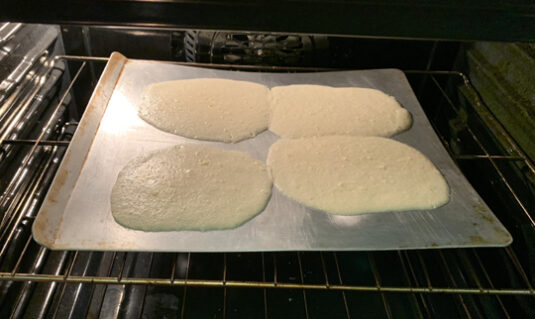
I separated the dough as best I could and added an extra few minutes of baking time for the edges to turn brown. The recipe specifically states to keep a close eye on your cookies because overcooking can happen very quickly, which I can confirm happens in a split second if you aren’t paying attention.
Once I felt the batter was baked, I tried to fold my first fortune cookie. The dough was hot! Very hot! Somehow I missed the author’s wise suggestion to invest in a pair of candy gloves, which would have protected my fingers from getting burned. Not deterred, I followed the folding instructions with nimble fingers while singing a rendition of “Hot Hot Hot” by Buster Poindexter. The fortune cookies looked great, but they were HUGE!
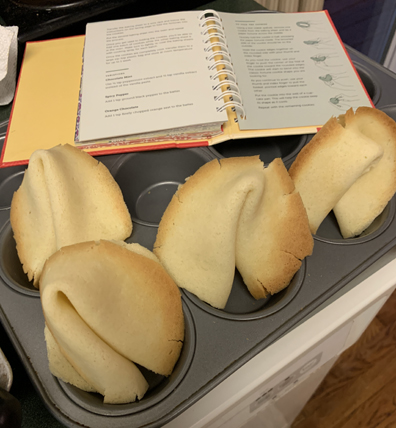
Lesson learned. Make smaller spreads of the batter and be speedy when folding.
The book’s estimate of about 20 cookies per batch was spot-on as I went through the baking and folding steps an additional four times. With each attempt, the size of the cookie got smaller and I was faster folding the hot dough. The final two rounds of baking, I was confident enough to add the paper fortunes created from the book, and folded the cookies around them.
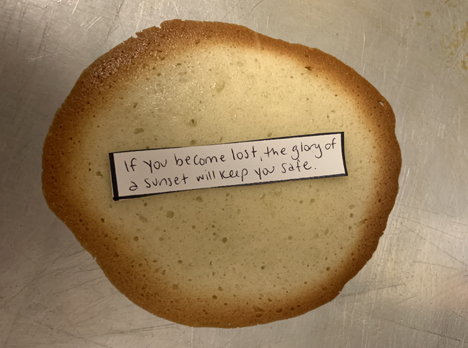
By the end, I was pleased my fortune cookies were almost the same size as a cookie you would receive from a restaurant. Moving from left to right in the image below, you can see the timeline of my cookie progress. On the far lower right is a restaurant fortune cookie for size comparison.
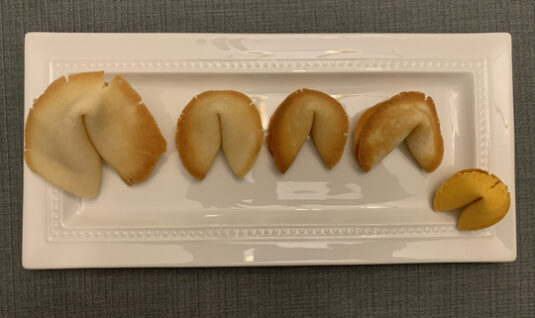 After sampling one (okay, three) cookies throughout the baking process, I can attest that they are really delicious. In the future, I think I’ll replace the almond extract with vanilla, or add some lemon or orange zest to enhance their flavor. There’s also a recipe for chocolate fortune cookies which basically reduces the amount of flour and adds cocoa powder.
After sampling one (okay, three) cookies throughout the baking process, I can attest that they are really delicious. In the future, I think I’ll replace the almond extract with vanilla, or add some lemon or orange zest to enhance their flavor. There’s also a recipe for chocolate fortune cookies which basically reduces the amount of flour and adds cocoa powder.
Note: as far as making the paper fortunes for the cookies, I found instructions for an online template in the book, but the link no longer works. However, the book does tell you the correct size of the fortunes so you can easily do it on your own.
The Good Fortune Cookie – both the book and the recipe – receive my seal of approval!
